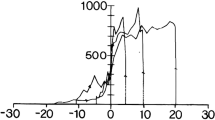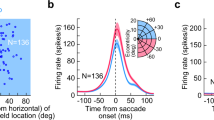Abstract
We present results of theoretical analysis and computational simulations of two models of the saccadic burst generator: the Scudder model and the Jurgens model. We used the experimental paradigm of prolonged stimulation in monkey superior colliculus (SC) to compare the performance of the two models. We excluded the Scudder model since it was not capable of reproducing the experimentally observed staircase movements. We modified the Jurgens model by replacing the originally proposed feedback integrator with an active reset mechanism by a leaky integrator. With this modification we have shown that the staircase movement elicited by prolonged stimulation in the SC can be modeled as a damped oscillatory step response of this model. Furthermore, to replicate the changes in the kinetic profiles of the staircase movements with increased stimulation we modified the functionality of the model. Our results suggest that prolonged stimulation of the SC dynamically changes the gains and time constant of the saccadic feedback.
Similar content being viewed by others
Author information
Authors and Affiliations
Additional information
Received: 6 September 1996 / Accepted: 19 February 1997
Rights and permissions
About this article
Cite this article
Breznen, B., Gnadt, J. Analysis of the step response of the saccadic feedback: computational models. Exp Brain Res 117, 181–191 (1997). https://doi.org/10.1007/s002210050214
Issue Date:
DOI: https://doi.org/10.1007/s002210050214




